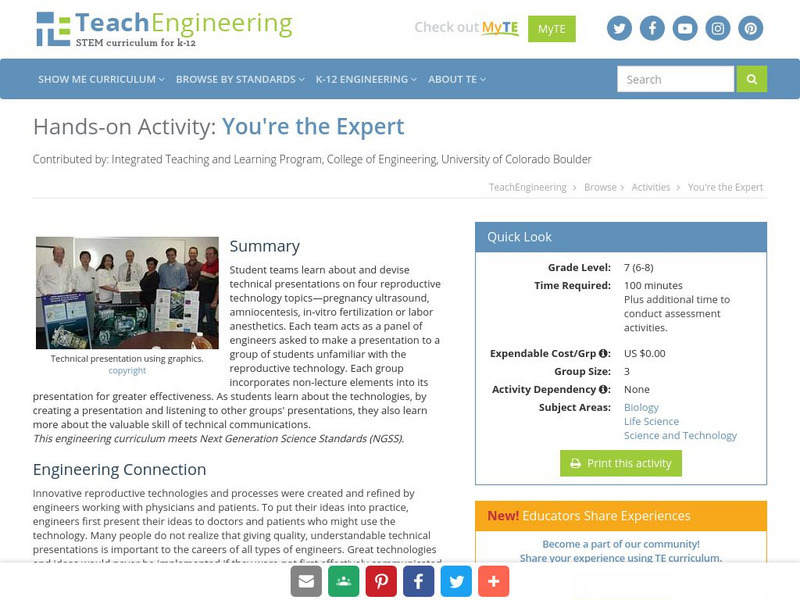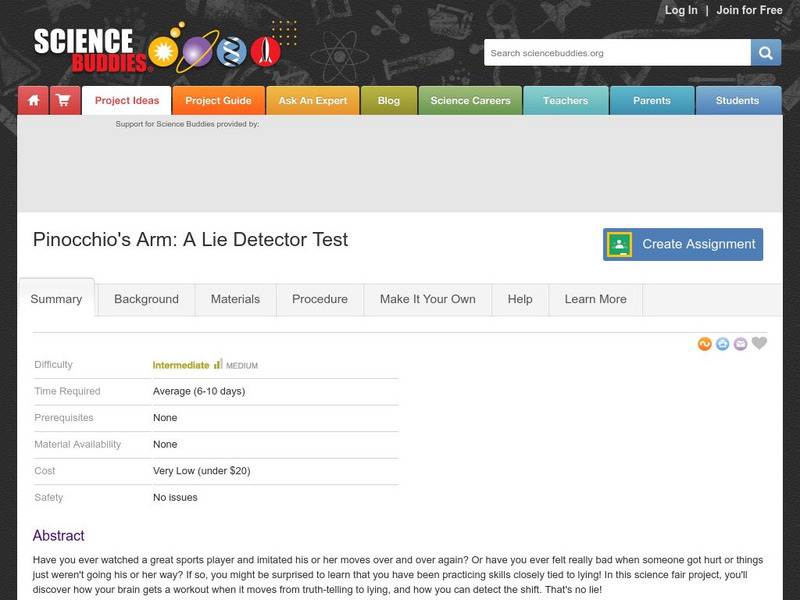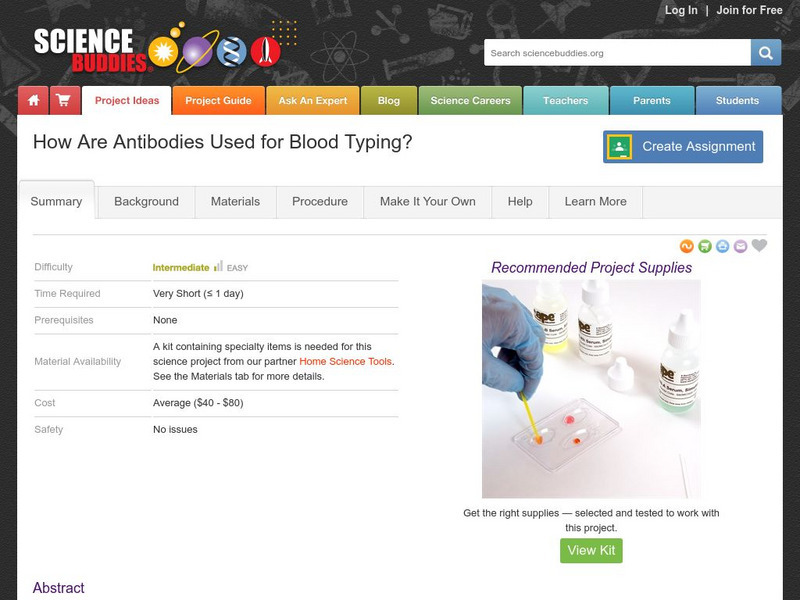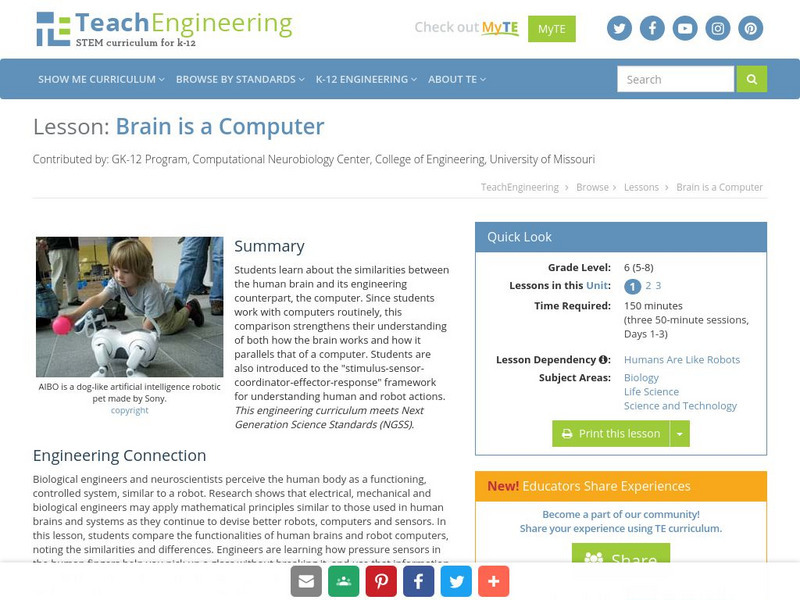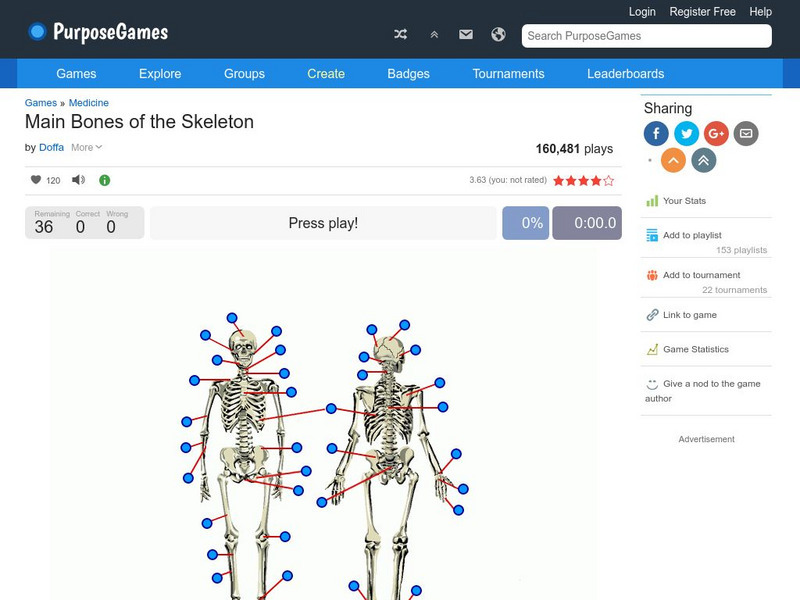TeachEngineering
Teach Engineering: You're the Expert
Student teams learn about and devise technical presentations on four reproductive technology topics pregnancy ultrasound, amniocentesis, in-vitro fertilization or labor anesthetics. Each team acts as a panel of engineers asked to make a...
Other
Washington University: Hemoglobin and the Heme Group:
This site from the Department of Chemistry at the Washington University provides a deetailed study of the role of hemoglobin in blood physiology. The article is somewhat in-depth, complete with pictures, charts, and a bibliography.
Science Buddies
Science Buddies: Effects of Exercise: Changes in Carbon Dioxide Output
Everybody knows that your body needs oxygen to keep going, and that you breathe out carbon dioxide as waste. What happens when you exercise? You've probably noticed that you breathe faster, and your heart beats faster. What triggers your...
Science Buddies
Science Buddies: Pinocchio's Arm: A Lie Detector Test
You might be surprised to learn that you have been practicing skills closely tied to lying if you have ever seen someone in pain, or mimicked your favorites sports athlete. In this science fair project, you will discover how your brain...
National Institutes of Health
United States National Library of Medicine
Home page of United States Department of Health and Human Services and the National Library of Medicine. All medical information contained in the Medline search engine comes from this, one of the world's largest medical libraries.
Sophia Learning
Sophia: Anatomy: Basic Anatomy Tutorial
Created to teach students of the 21st century, SOPHIA is bringing anatomy straight to your fingertips. Some great tips for teaching the basic parts of the body.
Arizona State University
Arizona State University School of Life Sciences: Viral Attack
There are battles that are fought each day on the planet. The invading forces are those of viruses and bacteria. Left alone they would take over and destroy every cell! It is up to some key defense systems to battle and destroy these...
TeachEngineering
Teach Engineering: Out of Breath
This lesson goes over the parts of the human respiratory system and the gas exchange process that occurs in the lungs. It also covers changes in the respiratory system that occur during spaceflight, such as decreased lung capacity.
PBS
Pbs Teachers: Surviving Aids: Fighting Back (Hot Science)
Explore the body's immune system to understand how a virus enters the body and how the human body fights against the viruses like the mumps virus and HIV.
Science Buddies
Science Buddies: Now You See It, Now You Don't! Test Your Peripheral Vision
The survival of our ancient ancestors depended on their ability to use peripheral vision to find prey and to avoid predators. Almost everything we do-from riding a bike, to dribbling a basketball, to reading a book-depends on peripheral...
Science Buddies
Science Buddies: How Are Antibodies Used for Blood Typing?
The human immune system has various ways of responding to an infection caused by bacteria or viruses. Our bodies produce proteins (antibodies) that are highly specific for the infectious agent as a part of our "humoral" immune response....
PBS
Nova: Making Vaccines
Explore the production of six different types of vaccines. This activity is interactive, allowing you to take part in the production of the different vaccines.
TeachEngineering
Teach Engineering: Polluted Air = Polluted Lungs
To gain a better understanding of the roles and functions of components of the human respiratory system and our need for clean air, students construct model lungs that include a diaphragm and chest cavity. They see how air moving in and...
OpenStax
Open Stax: Forces and Torques in Muscles and Joints
From a chapter on Statics and Torque in a Physics textbook. This section of the chapter provides an in-depth discussion of forces and torque in the human body. We learn about muscular force, the importance of posture in preventing back...
Gateway Community College
James Crimando: Superficial Head and Neck: Brief Tutorial
Identify various anatomy of the human head and neck.
Gateway Community College
James Crimando: Major Superficial Muscles: Anterior Trunk and Arm
Learn the anatomy of the human anterior trunk and arm.
TeachEngineering
Teach Engineering: Brain Is a Computer
Students learn about the similarities between the human brain and its engineering counterpart, the computer. Since students work with computers routinely, this comparison strengthens their understanding of both how the brain works and...
TeachEngineering
Teach Engineering: Digestion Simulation
To reinforce students' understanding of the human digestion process, the functions of several stomach and small intestine fluids are analyzed, and the concept of simulation is introduced through a short, introductory demonstration of how...
NASA
Nasa: The Brain in Space
This educators guide shows young scholars how the body's brain, spinal cord and network of nerves control the activities of animals and humans.
National Health Museum
Access Excellence: The Living Skeleton: A Tour of Human Bones
Take a tour of the human skeleton and see computer images of various bones of the body, including the normal bone and bones that have anomalies.
Inner Body
Innerbody: Nervous System
This site provides information about the Nervous System, including a visual aide.
PurposeGames
Purpose Games: Main Bones of the Skeleton
Thirty six question quiz tests the users knowledge of the main bones of the body.
Other
Dr. Saul: Biology in Motion
This interactive site provides animations and activities in several areas of physiology. The images are simple, but clear. The accompanying text provides a good description of the process being shown.
Other
Marine Biological Laboratory: Why Study Marine Organisms for Biomedical Research
Descriptions of various research projects using marine organisms that have direct impact on medical research. The resource has a perspective on how medicine makes progress.
